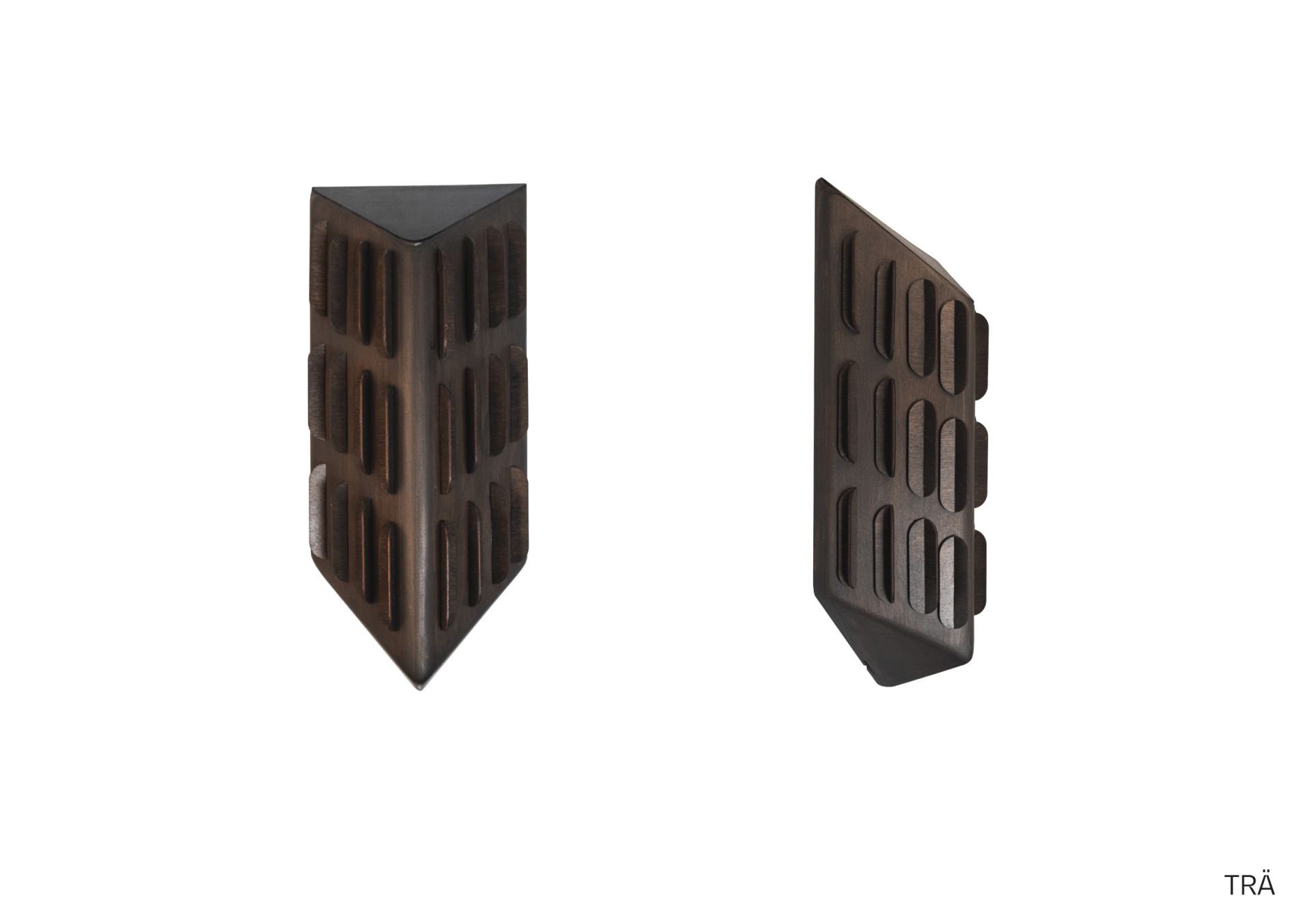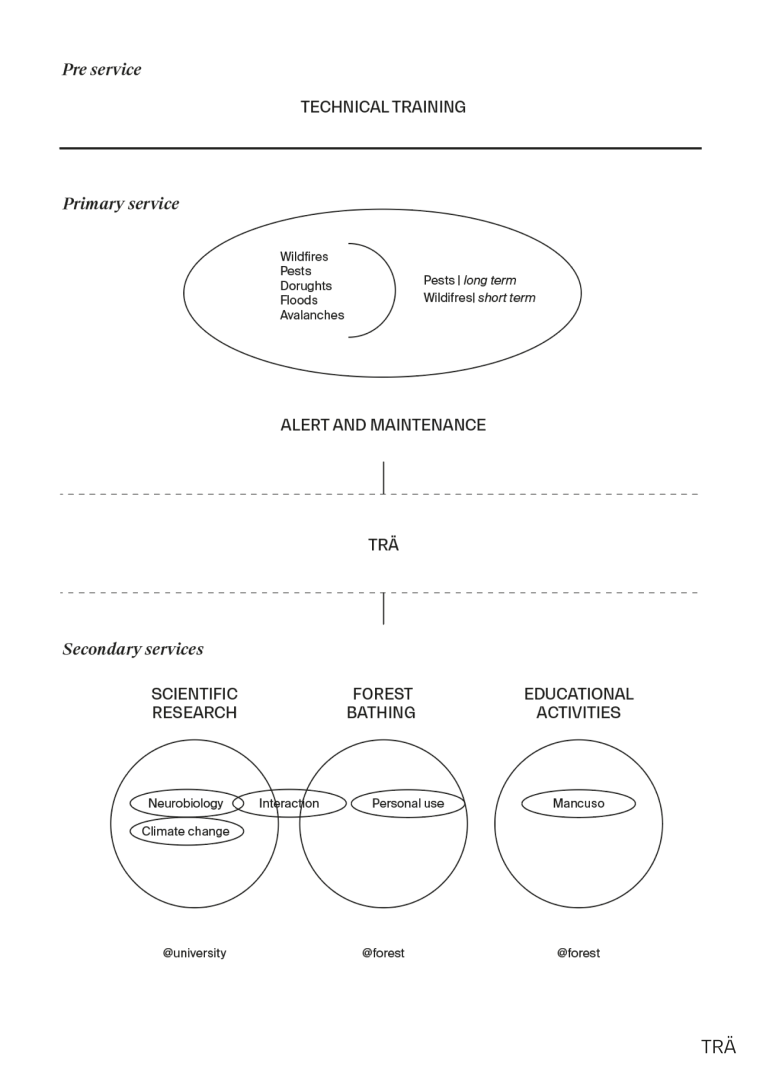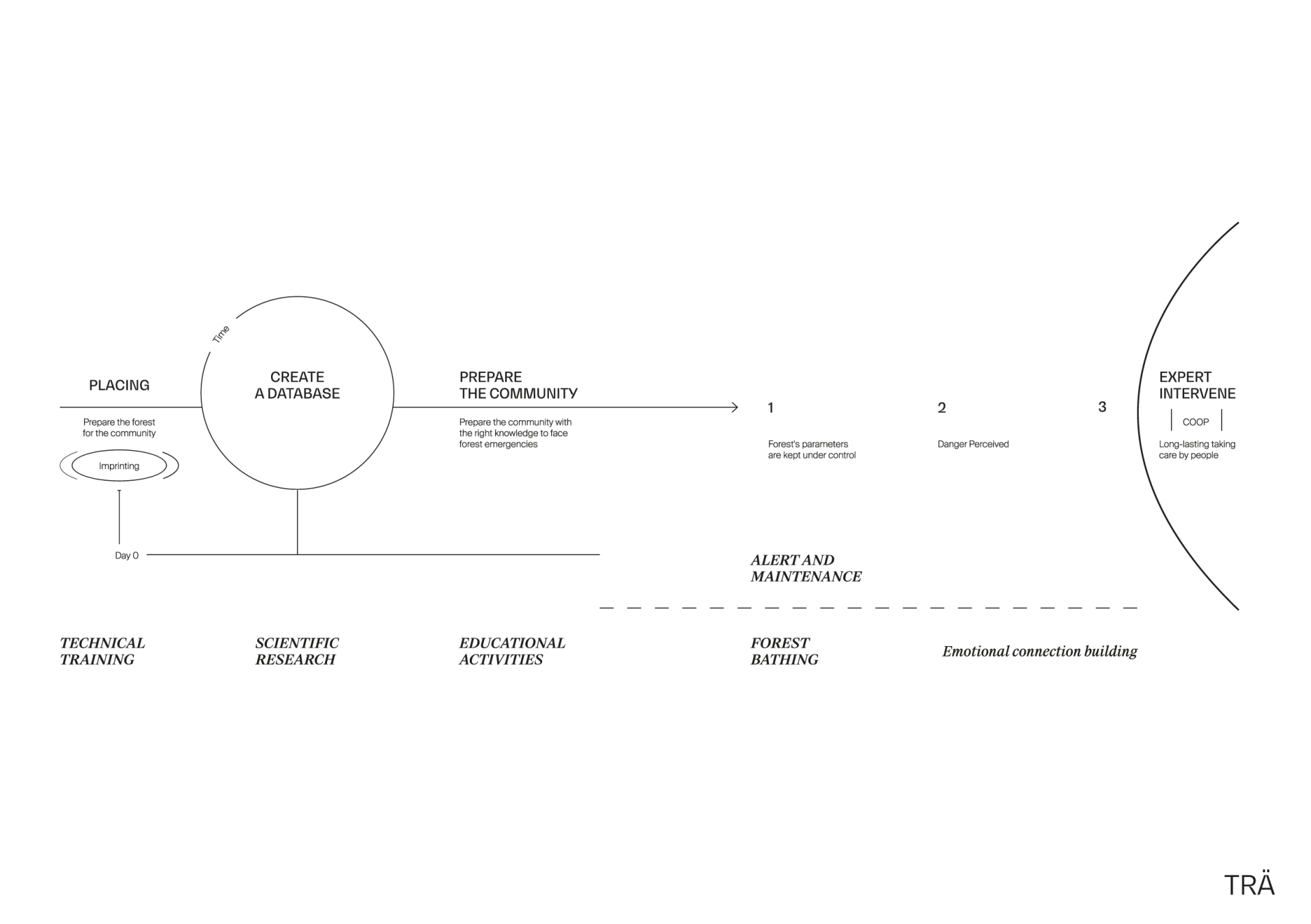TRÄ
Basic information
Project Title
Full project title
Category
Project Description
In a future fraught with the uncertainty of climate change, challenge-based projects will provide a community of trained volunteers the opportunity to shape their own future. The TRÄ System will declare a symbiosis between human beings and forests through two devices and an app.Based on data collected by the products, a digitally supported network will mirror the existing connection among the roots of trees and will alert the community in case of need, promoting a quick and effective reaction.
Geographical Scope
Project Region
Urban or rural issues
Physical or other transformations
EU Programme or fund
Which funds
Description of the project
Summary
The idea behind our project was the regeneration of the environment. We were seeking a connection with nature that would allow human beings to act in order to preserve it and to understand it better.
The challenge facing our project is to be able to prevent and solve some of the forestry problems that will arise in the next few years as temperatures rise due to climate change. In particular, the TRÄ system focuses on identifying and containing the spread of forest pests; in addition to this, the product can also be useful for monitoring the response of trees to heat waves and thus predicting the onset of forest fires.
A key part of our idea is the collection of data from the trees, then translated for the human part trough an app.. With constant monitoring, it will be possible to understand and interpret changes in the forest more quickly and easily.
In doing this, TRÄ also contributes to create a proficuous, stable and long-lasting connection between humans and trees: by translating the trees’ status into harmonious movements it makes possible a sort of communication between the two living beings; in addition, with time and research, it may even reveal if human company affects the growing of trees and to which extent. These goals can be achieved thanks to the TRÄ Unit, a single device placed on a tree that collects datas and represents the tree status through the movements of its pattern, while the TRÄ Hub is a tool that can be placed among a restricted number of trees already equipped with TRÄ Units, intended to make it visible how the trees behave in confrontation with each other.
Key objectives for sustainability
Environmental sustainability is one of the core values of our concept. In fact, the tools are designed for introducing forest-caring in everyday life, bringing a lot of benefits to every living being. Involving volunteers, creating communities around the willingness to protect nature, providing the tools for an active defense of the local ecosystems and even connecting people and trees through mindfulness exercises: each application of TRÄ tends to make sustainability a matter of fact, and not a greenwashing exercise. Educating the locals on what actually trees are, opening their eyes on such beautiful and complex organisms, and training them to face diverse challenges set by the climate change and the rising temperatures means to empower them, enhancing their participation and boosting their self-confidence, and to save precious time, money and, most of all, green areas. The TRÄ Unit itself is mainly made of plywood, having the wood covering the technical asset, and is designed for being recycled as a bird house when it is time for a unit to be discarded; in the same way, the TRÄ Hub is meant to be reconfigured into a practical forest shelter where to leave fundamental materials for the forest maintenance.
Key objectives for aesthetics and quality
For what concerns the appearance of the product, the TRÄ Units are designed to merge into the pine trees and disappear in the context of a forest. Their edgy yet organically rounded lines converge into the pattern of the pines bark and the light and shade effect generated by the device flakes recalls the tridimensional surface of the trunks. All these choices, along with the right nuance of brown, give the impression of a product spontaneously generated by a tree: an extension of its own body through which to communicate with human beings. One of the most challenging tasks has been to design the moving flakes: the team prototyped several shapes (with paper, cartoon, yarns and wood) taking inspiration by nature through a biodesign process; the selected form was created by abstracting the tree bark itself. TRÄ Hubs are instead more invasive but aim at subtly defining a space inside a space: again, smoothed lines and dark colors creates a geometrical yet asymmetrical shelter under the tree crowns. For what concerns the interaction with the product, apart from the sight, the other sense notably involved is hearing. The team has imagined that the sound produced by the flapping wooden flakes could have become “iconic” and representative: not too far from the one generated by a woodpecker or a branch shaken by the wind, it merges into the forest soundscape without standing out but yet recognizable. In fact, it outstands only when danger has to be communicated. The sound starts playing when the tree supposedly "sees” a human being in its perceptive sphere. The natural colors and lines give shape to a human-and-forest friendly tool, respectful of the environment and pleasant to the eyes (when detected): in fact, already existing technologies for monitoring forests (as the “Tree Talkers” by Valentini R. on which we heavily rely on) are extremely performance-driven and do not merge in the context they are set up, covering trees with black boxes, cables and elastics bands.
Key objectives for inclusion
The TRÄ System aims at reaching everyone who wants to do his/her part in the defense of the environment, providing him/her education, training and tools to make a change in the world. It connects universities, townsmen and professionals in a value-creation chain in which each actor acquires benefits and shares knowledge with the others. Universities carry out the direction of the project itself, providing the community with a service and at the same time collecting new data for further scientific research; the volunteers can attend special lectures about plants’ physiology and neurobiology, be trained by forestal technicians and rangers to overcome natural threats and develop a deeper connection with their territory; last but not least, professionals in the forestry sector will be able to pass on their know-how to people, training a support “army'' in a scenario highly damaged by the climate change. Citizen engagement is without any doubt a key concept of our project: in fact, if the pilot is imagined to take place in Sweden, in a small town near a forest, the TRÄ System may be applied also to city parks and crops. In city parks, TRÄ’s functions related to mindfulness and human well being will be exploited more - and, as a team, we strongly believe that introducing a tool like this will, with time, strongly affect our consideration of trees. We could say that our idea of inclusivity includes trees as well, and we would appreciate calling our design process “human and plant centered”. Our mission as a brand would be to accompany the Earth from the Anthropocene to the Symbiocene, opening a new season of products (but mostly services) that will help the humans in reconnecting with all the other living beings and in providing mutual help to overcome the consequences of climate change.
Physical or other transformations
Innovative character
The shape and elements that configure TRÄ were planned for being mimetic in the tree, without making it invasive for the forest, neither visually nor environmentally. In the same direction, the function adds the possibility to give a better interaction and perception of any person who wants to learn more about what is happening in real-time. This interaction is mostly in one direction and there is no physical contact at any time. Finally, the services and mainly the activities proposed into it, allow people to learn “by doing” and at the same make an engagement with their ecosystem, living and experiencing the consequences of climate change and have the opportunity to actively participate to protect it. The interaction between all these dimensions is happening at the same time, and are interdependent one from another. A further aspect of the concept is the post-service, which aims to improve it, learning from each citizen and offering people to adopt and adapt it within their context, their rituals, and making it part of their daily lives. During the practice, defining the roles through different activities and defining the touchpoints as the web page or the app, is the beginning to understand why the project is relevant to the community, how the system works and what actions can be made before, during and after a casualty is about to happen. A plague can start without noticing once is beginning, therefore thanks to the data being analyzed by the university, being around the forest making any activity such as meditation or forest bathing, the tree with the product installed will make a gentle but notorious response to interact with the people around, letting them know if something is happening, in a case of a casualty the called “stressed” movement will alert people that something wrong is happening, and from that moment they have to check the digital platforms to know exactly what it is, and as the subsequent step call the specific authority to take action in it.





